-
 Bitcoin
Bitcoin $115500
-2.42% -
 Ethereum
Ethereum $3669
-4.98% -
 XRP
XRP $2.962
-5.84% -
 Tether USDt
Tether USDt $1.000
0.01% -
 BNB
BNB $776.6
-3.18% -
 Solana
Solana $168.7
-6.83% -
 USDC
USDC $1.000
0.01% -
 Dogecoin
Dogecoin $0.2058
-7.89% -
 TRON
TRON $0.3256
-0.39% -
 Cardano
Cardano $0.7242
-7.45% -
 Hyperliquid
Hyperliquid $40.19
-7.21% -
 Sui
Sui $3.546
-8.07% -
 Stellar
Stellar $0.3919
-8.08% -
 Chainlink
Chainlink $16.60
-7.92% -
 Bitcoin Cash
Bitcoin Cash $564.6
-3.00% -
 Hedera
Hedera $0.2474
-9.31% -
 Avalanche
Avalanche $21.93
-8.74% -
 Ethena USDe
Ethena USDe $1.001
-0.02% -
 Toncoin
Toncoin $3.481
0.22% -
 UNUS SED LEO
UNUS SED LEO $8.933
-0.25% -
 Litecoin
Litecoin $105.3
-4.98% -
 Shiba Inu
Shiba Inu $0.00001228
-6.13% -
 Polkadot
Polkadot $3.652
-5.97% -
 Uniswap
Uniswap $9.297
-8.52% -
 Monero
Monero $306.7
-2.66% -
 Dai
Dai $0.9999
0.00% -
 Bitget Token
Bitget Token $4.396
-3.09% -
 Cronos
Cronos $0.1380
-6.60% -
 Pepe
Pepe $0.00001058
-8.52% -
 Aave
Aave $258.3
-7.43%
What is a moving average (MA) in cryptocurrency trading?
Moving averages smooth crypto price data to reveal trends, with SMAs weighting all prices equally and EMAs reacting faster by emphasizing recent data.
Jul 31, 2025 at 06:30 pm
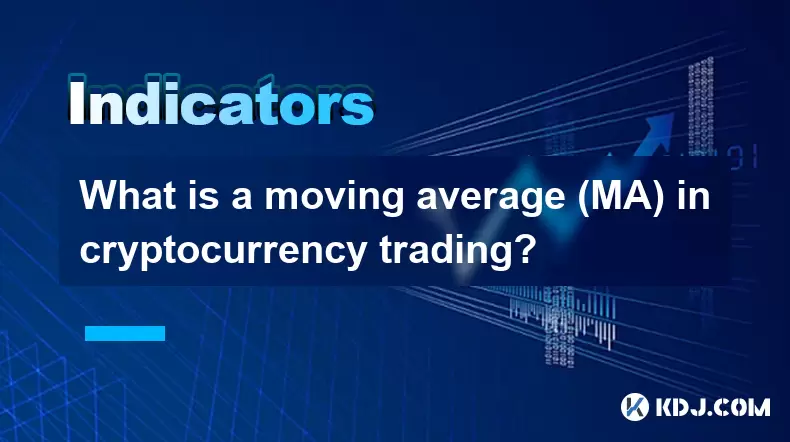
Understanding the Concept of Moving Average (MA)
A moving average (MA) is a widely used technical analysis tool in cryptocurrency trading that helps smooth out price data over a specified time period by creating a constantly updated average price. This average is called "moving" because it drops the oldest price data point as new data becomes available, allowing traders to identify trends more clearly. The primary purpose of using an MA is to eliminate short-term price fluctuations and highlight longer-term trends or directions in asset prices.
In the context of cryptocurrency, where price volatility is extremely high, MAs provide a clearer picture of whether an asset like Bitcoin or Ethereum is trending upward, downward, or moving sideways. By analyzing the slope and position of the MA relative to current price action, traders can make more informed decisions about entering or exiting positions.
Types of Moving Averages Used in Crypto Trading
There are several types of moving averages, each with unique calculation methods and applications:
Simple Moving Average (SMA): This is calculated by summing up the closing prices of a cryptocurrency over a specific number of periods and dividing that sum by the number of periods. For example, a 10-day SMA adds the closing prices of the last 10 days and divides by 10. SMAs treat all data points equally.
Exponential Moving Average (EMA): Unlike the SMA, the EMA gives more weight to recent prices, making it more responsive to new information. This makes the EMA particularly useful in fast-moving crypto markets where recent price action may be more relevant than older data.
Weighted Moving Average (WMA): This type assigns linearly decreasing weights to older prices. While less common than SMA and EMA, it is occasionally used by advanced traders seeking greater sensitivity to recent price changes.
Each of these MAs can be applied across various timeframes—such as 9-day, 20-day, 50-day, or 200-day—depending on the trader’s strategy and time horizon.
How to Calculate a Simple Moving Average
Calculating a Simple Moving Average (SMA) is straightforward and can be done manually or through trading platforms. Here’s how:
- Choose the time period (e.g., 7 days).
- Collect the closing prices of the cryptocurrency for the last 7 days.
- Add up all 7 closing prices.
- Divide the total by 7.
- The result is the 7-day SMA for the current day.
For example, if the closing prices of Solana over the past 7 days are $98, $100, $105, $103, $107, $110, and $112, the SMA is calculated as:
(98 + 100 + 105 + 103 + 107 + 110 + 112) / 7 = $105
This value will update each day as the newest closing price is added and the oldest is removed.
Using Moving Averages for Trend Identification
One of the most practical applications of MAs in cryptocurrency trading is identifying market trends. When the price of a digital asset trades above its moving average, it often signals an uptrend. Conversely, when the price is below the MA, it may indicate a downtrend.
Traders commonly use multiple MAs simultaneously. A popular setup involves plotting both the 50-day EMA and the 200-day EMA on a price chart. When the 50-day EMA crosses above the 200-day EMA, this is known as a "golden cross" and is considered a bullish signal. On the other hand, when the 50-day EMA crosses below the 200-day EMA, it forms a "death cross", which is interpreted as bearish.
These crossover signals are widely monitored in the crypto space, especially for major assets like Bitcoin, where such patterns can influence market sentiment and trigger large-scale buying or selling.
Setting Up Moving Averages on Trading Platforms
Most cryptocurrency trading platforms, such as Binance, Bybit, or TradingView, allow users to apply moving averages directly on price charts. Here’s how to do it on TradingView:
- Open a chart for the cryptocurrency of interest (e.g., Cardano).
- Click on the “Indicators” button located at the top of the chart.
- Search for “Moving Average” in the indicator search bar.
- Select either SMA or EMA from the results.
- Set the desired period (e.g., 20, 50, or 200).
- Choose the color and line thickness for visual clarity.
- Click “Add to Chart”.
Once applied, the MA line will appear on the chart. Traders can add multiple MAs with different settings to compare them. For instance, overlaying a 9-day EMA and a 21-day EMA helps identify short-term momentum shifts.
Common Moving Average Trading Strategies
Many traders build strategies around moving averages due to their simplicity and effectiveness. One such method is the MA crossover strategy:
- Apply two EMAs: a short-term (e.g., 9-day) and a long-term (e.g., 21-day).
- When the short-term EMA crosses above the long-term EMA, it generates a buy signal.
- When the short-term EMA crosses below the long-term EMA, it triggers a sell signal.
Another strategy involves using a single MA as a dynamic support or resistance level. For example, during an uptrend, the 50-day SMA might act as a support zone. If the price pulls back to this level and bounces, it could present a buying opportunity.
Scalpers in the crypto market often use shorter MAs like the 5-period or 13-period EMA on 5-minute or 15-minute charts to capture quick momentum moves in volatile assets like Dogecoin or Shiba Inu.
Frequently Asked Questions
What is the difference between SMA and EMA in crypto trading?
The Simple Moving Average (SMA) calculates an average of past prices with equal weight given to each data point. The Exponential Moving Average (EMA) assigns greater weight to recent prices, making it more sensitive to new information. In fast-moving crypto markets, EMA often reacts quicker to price changes than SMA.
Which moving average period is best for day trading cryptocurrencies?
Commonly used periods for day trading include the 9 EMA, 20 EMA, and 50 EMA. Shorter periods like 9 or 20 are preferred because they adapt quickly to intraday price movements, helping traders identify immediate trends and entry points.
Can moving averages predict exact price levels in cryptocurrency markets?
No, moving averages do not predict exact price levels. They are trend-following indicators that help identify the direction and strength of a trend. They work best when combined with other tools like volume analysis, RSI, or support/resistance levels.
How do I avoid false signals when using MA crossovers?
False signals can occur during sideways or choppy markets. To reduce them, traders often use additional confirmation tools such as volume spikes, candlestick patterns, or waiting for the price to close beyond the MA. Using longer timeframes (e.g., 1-hour instead of 5-minute charts) also improves signal reliability.
Disclaimer:info@kdj.com
The information provided is not trading advice. kdj.com does not assume any responsibility for any investments made based on the information provided in this article. Cryptocurrencies are highly volatile and it is highly recommended that you invest with caution after thorough research!
If you believe that the content used on this website infringes your copyright, please contact us immediately (info@kdj.com) and we will delete it promptly.
- Rarible Integrates Somnia Blockchain: A New Era for NFT Gaming?
- 2025-08-01 12:30:11
- JPMorgan, Coinbase, and Crypto Mainstream: A New York Minute on the Future of Finance
- 2025-08-01 12:30:11
- Altcoin Season in Full Swing: Market Shift and Key Metrics to Watch
- 2025-08-01 12:50:12
- Ripple, XRP, and RLUSD: Navigating Growth and Innovation
- 2025-08-01 08:30:37
- Tether's Triumph: Profits, US Initiatives, and Stablecoin Supremacy
- 2025-08-01 09:11:00
- Ethereum, ZK-VMs, and Quantum Resistance: A New Era for Blockchain Security?
- 2025-08-01 09:30:12
Related knowledge

Does the KDJ indicator work well for low-liquidity crypto assets?
Aug 01,2025 at 02:01pm
Understanding the KDJ Indicator in Cryptocurrency TradingThe KDJ indicator is a momentum oscillator derived from the Stochastic Oscillator, widely use...
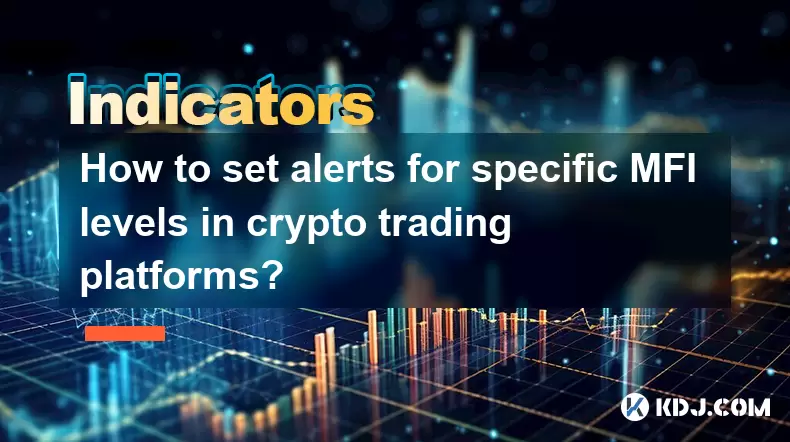
How to set alerts for specific MFI levels in crypto trading platforms?
Aug 01,2025 at 12:42pm
Understanding the Money Flow Index (MFI) in Crypto TradingThe Money Flow Index (MFI) is a momentum oscillator that measures the flow of money into and...
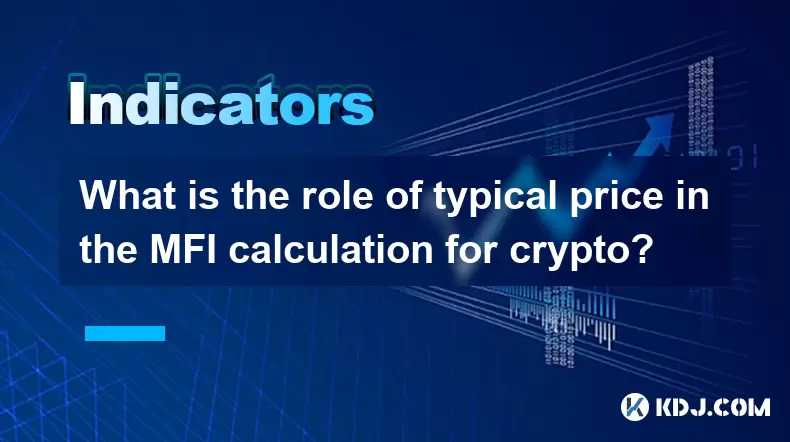
What is the role of typical price in the MFI calculation for crypto?
Aug 01,2025 at 12:21pm
Understanding the Typical Price in MFI for Cryptocurrency AnalysisThe Typical Price plays a crucial role in the calculation of the Money Flow Index (M...
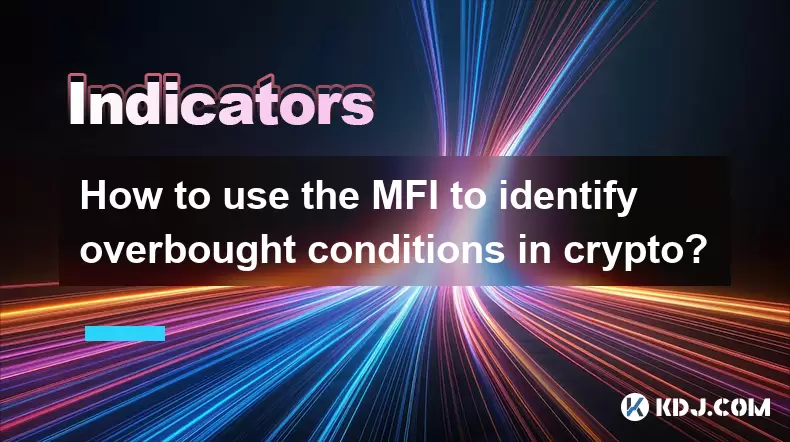
How to use the MFI to identify overbought conditions in crypto?
Aug 01,2025 at 10:49am
Understanding the Money Flow Index (MFI) in Cryptocurrency TradingThe Money Flow Index (MFI) is a momentum oscillator that measures the inflow and out...
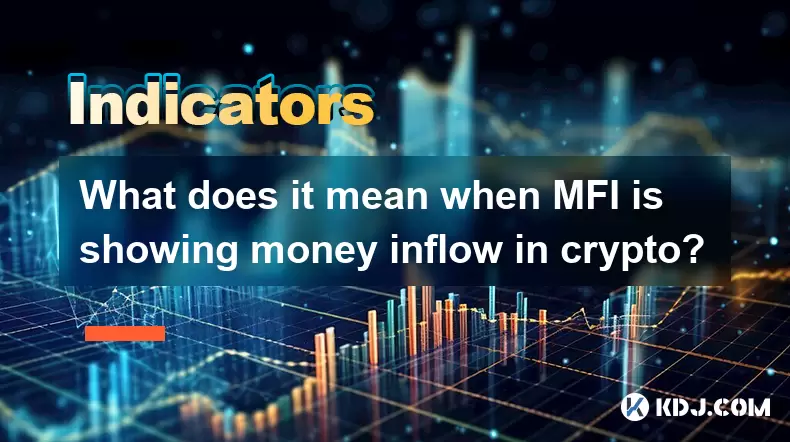
What does it mean when MFI is showing money inflow in crypto?
Aug 01,2025 at 01:28pm
Understanding the MFI Indicator in Cryptocurrency MarketsThe Money Flow Index (MFI) is a technical oscillator that measures the flow of money into and...
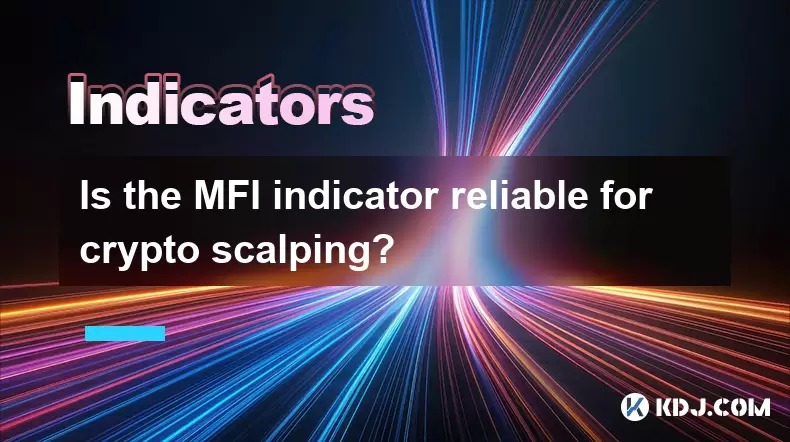
Is the MFI indicator reliable for crypto scalping?
Aug 01,2025 at 11:00am
Understanding the MFI Indicator in Cryptocurrency TradingThe Money Flow Index (MFI) is a momentum oscillator that measures the flow of money into and ...

Does the KDJ indicator work well for low-liquidity crypto assets?
Aug 01,2025 at 02:01pm
Understanding the KDJ Indicator in Cryptocurrency TradingThe KDJ indicator is a momentum oscillator derived from the Stochastic Oscillator, widely use...

How to set alerts for specific MFI levels in crypto trading platforms?
Aug 01,2025 at 12:42pm
Understanding the Money Flow Index (MFI) in Crypto TradingThe Money Flow Index (MFI) is a momentum oscillator that measures the flow of money into and...

What is the role of typical price in the MFI calculation for crypto?
Aug 01,2025 at 12:21pm
Understanding the Typical Price in MFI for Cryptocurrency AnalysisThe Typical Price plays a crucial role in the calculation of the Money Flow Index (M...

How to use the MFI to identify overbought conditions in crypto?
Aug 01,2025 at 10:49am
Understanding the Money Flow Index (MFI) in Cryptocurrency TradingThe Money Flow Index (MFI) is a momentum oscillator that measures the inflow and out...

What does it mean when MFI is showing money inflow in crypto?
Aug 01,2025 at 01:28pm
Understanding the MFI Indicator in Cryptocurrency MarketsThe Money Flow Index (MFI) is a technical oscillator that measures the flow of money into and...

Is the MFI indicator reliable for crypto scalping?
Aug 01,2025 at 11:00am
Understanding the MFI Indicator in Cryptocurrency TradingThe Money Flow Index (MFI) is a momentum oscillator that measures the flow of money into and ...
See all articles

























































































